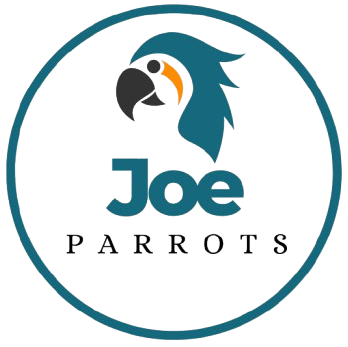Parrot Feeding
- Home
- Parrot Feeding
What Should You Feed Your Parrot?
Feeding a parrot can sometimes feel confusing with so many options available. From seeds and pellets to fresh fruits, vegetables, and even homemade meals, it’s natural to wonder what’s truly best. That’s why we’ve created this straightforward guide to break it down for you—so you’ll know exactly what your feathered companion needs for a well-balanced, healthy diet.
Seeds
Feeding a parrot can sometimes feel confusing with so many options available. From seeds and pellets to fresh fruits, vegetables, and even homemade meals, it’s natural to wonder what’s truly best. That’s why we’ve created this straightforward guide to break it down for you—so you’ll know exactly what your feathered companion needs for a well-balanced, healthy diet.
Pellets
Pellets are specially designed to provide balanced nutrition and often come in different shapes and colors that attract parrots. They’re made using a mix of grains, seeds, vitamins, and minerals. However, it’s important to consult your avian vet to select the right type—especially for species like lories or softbills that require specialized diets.
Vegetables
Fresh vegetables are essential for your parrot’s diet! Nutrient-rich leafy greens such as kale, spinach, parsley, and chard are excellent choices. You can also add colorful options like bell peppers, green beans, sweet potatoes, carrots, and squash. For extra variety, include sprouted legumes and wholesome grains like quinoa or brown rice—just remember to keep them plain and avoid any dressings.
Protein
Protein is essential for your parrot’s health. Great sources include plant-based foods like soybeans, lentils, quinoa, and nuts, along with small portions of plain cooked egg, chicken, or fish. For macaws and other large parrots, unsalted nuts such as almonds and walnuts are especially beneficial.
Fruits
Fruits are a delicious, vitamin-packed treat! Choose colorful, Vitamin A-rich options like mangoes, papaya, persimmons, berries, and apricots. Just keep in mind—since fruits are high in sugar, they should be enjoyed as an occasional bonus, not the main part of the diet.
Cooked Mixes & DIY Meals
Cooking for your parrot is a true act of love! Try soak-and-cook mixes, bird-friendly muffins, or homemade parrot recipes to add variety. Just be sure to follow the instructions carefully and avoid any ingredients that aren’t safe for birds.
Treats
Of course, parrots deserve a little treat every now and then! Whether it’s a reward during training sessions or simply a fun snack to brighten their day, there are many healthy options available for your feathered friend. The key is balance—just like with humans, treats should be given in moderation to avoid upsetting their diet. When chosen wisely, treats can be a great way to bond, encourage positive behavior, and add some excitement to your parrot’s daily routine.
How Much to Feed
Feeding portions vary depending on your parrot’s size and activity level. A general rule?
- Small birds: 1 cup of pellets + ½ tsp fruits and veggies
- Large birds: ½ cup pellets + 1 tbsp fruits and veggies
Always consult your avian vet for personalized guidance.
Foraging Fun
In nature, parrots spend as much as 80% of their day searching for food. When kept at home, it’s up to you to recreate that challenge and mental stimulation. You can hide pellets in cardboard, hang fresh foods from bird-safe branches, or use puzzle feeders to tap into their natural instincts. This not only keeps them entertained but also promotes a happier, more active parrot.
